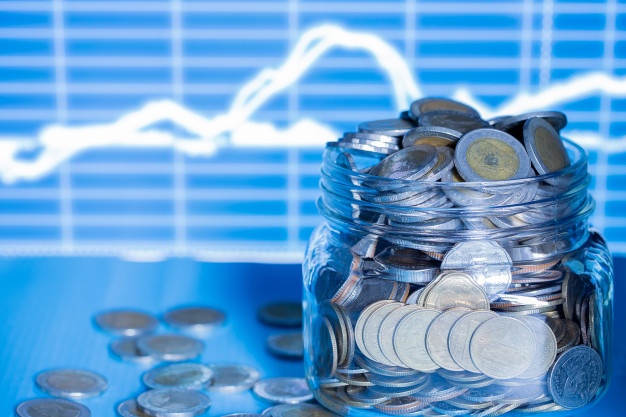Research conclusion
Event: on May 17, 2022, the Ministry of Finance announced the latest financial revenue and expenditure. From January to April, 2022, the national general public budget revenue was 7.43 trillion yuan, an increase of 5% after deducting the factors of retention and tax rebate, and a decrease of 4.8% according to the natural caliber. The national general public budget expenditure was 8.09 trillion yuan, a year-on-year increase of 5.9%. The revenue of national government funds was 1.76 trillion yuan, a year-on-year decrease of 27.6%. The national government fund expenditure was 3.15 trillion yuan, a year-on-year increase of 35.2%.
The tax rebate accelerated and superimposed the impact of the epidemic, and the tax growth rate decreased significantly in April. In April, the cumulative value of general public finance decreased by 13.4 percentage points compared with the previous value. The cumulative year-on-year value of tax revenue after deducting the factors of tax rebate was 3.7%, which was - 7.6% according to the natural caliber, and the previous value was 7.7%. Among the major taxes, the growth rate of China's value-added tax decreased the most, with a cumulative decline of 32.5 percentage points from the previous value to - 28.9%; The cumulative corporate income tax and individual income tax were 5.4% and 11.4% respectively year-on-year, down 4.4 and 5.1 percentage points respectively from the previous value. In addition, the growth rate of non tax revenue remained high, only 0.8 percentage points lower than the previous value to 13.4%, or related to the profits handed over by state-owned financial institutions such as the central bank.
The epidemic has further boosted health expenditure, and some other sub expenditures such as infrastructure have slowed down. From January to April, the cumulative national general public budget decreased by 2.4 percentage points compared with the previous value. Among them, the cumulative health expenditure increased by 1.3 percentage points to 7.5% compared with the previous value, and the total of other livelihood items (education, culture and tourism, social security and employment) decreased by 3.5 percentage points to 4.1% compared with the previous value; Expenditure on infrastructure (energy conservation and environmental protection, urban and rural community affairs, agriculture, forestry and water affairs, transportation) slowed slightly, and the cumulative year-on-year growth rate from January to April decreased by 1.3 percentage points to 7.2% compared with the previous value (the proportion of cumulative amount decreased by 0.3 percentage points); The cumulative expenditure on science and technology was 15.5% year-on-year, compared with the previous value of 22.4%.
In April, the progress of general public finance revenue and expenditure was slow. In April, the general public finance revenue was only 5.8% of the annual budget, while the expenditure was only 6.5%, the lowest in the same period since 2016.
Land income is a drag on government fund income. From January to April, the cumulative income of government funds decreased by 2 percentage points compared with the previous value, of which the cumulative income from the transfer of state-owned land use right was - 29.8% year-on-year and the previous value was - 27.4%.
The growth rate of government fund expenditure slowed down, or related to the slowdown in the issuance of special bonds in April, but it is still at a high level. The cumulative expenditure of government funds decreased by 7.8 percentage points compared with the previous value, but the growth rate is still high, and the expenditure in the current month completed 4.8% of the annual budget, higher than that in the same period of 2019 and 2021. We believe that the slowdown in government fund expenditure in April is related to the delay in the construction period of infrastructure projects and the slowdown in the issuance of special bonds. However, at the end of March, the Ministry of finance has issued the second batch of special bonds. As of May 18, 1625 billion yuan of special bonds have been issued, accounting for 44.5% of the new special bonds of local governments in 2022. The issuance progress is 6.1 percentage points higher than that in April, which is significantly higher than that in April by 2.84%.
Both narrow and broad fiscal revenues and expenditures contracted in April, reflecting that the current phased downward pressure on the economy is indeed large, but the more positive trend of the follow-up active fiscal policy is not changed: (1) this year, the manufacturing industry and the service industry seriously impacted by the epidemic (such as catering) are mainly supported by fiscal tools with stronger direct attributes such as retention and tax rebate. This factor leads to the decline of fiscal revenue and the corresponding expenditure scale is also limited. (2) April was at the junction of the early approval and the second batch of special bonds, and the issuance progress of the first and second batches was slow. The issuance progress has been accelerated again in May, and the expenditure of government funds is expected to remain at a high level. (3) Structurally, for the general public finance, the importance of financial measures to protect people's livelihood, employment and market players is increasing, and the proportion of relevant expenditures is expected to further increase. At present, the determined policies such as retention tax rebate, export tax rebate and unemployment insurance return are accelerating the implementation, and incremental policies such as retention training and deferred payment of social insurance premiums are also gradually unveiled, laying an important foundation for post epidemic repair.
Risk tips
The impact of the epidemic on market players has further increased, resulting in a decline in fiscal revenue growth that exceeded expectations.
